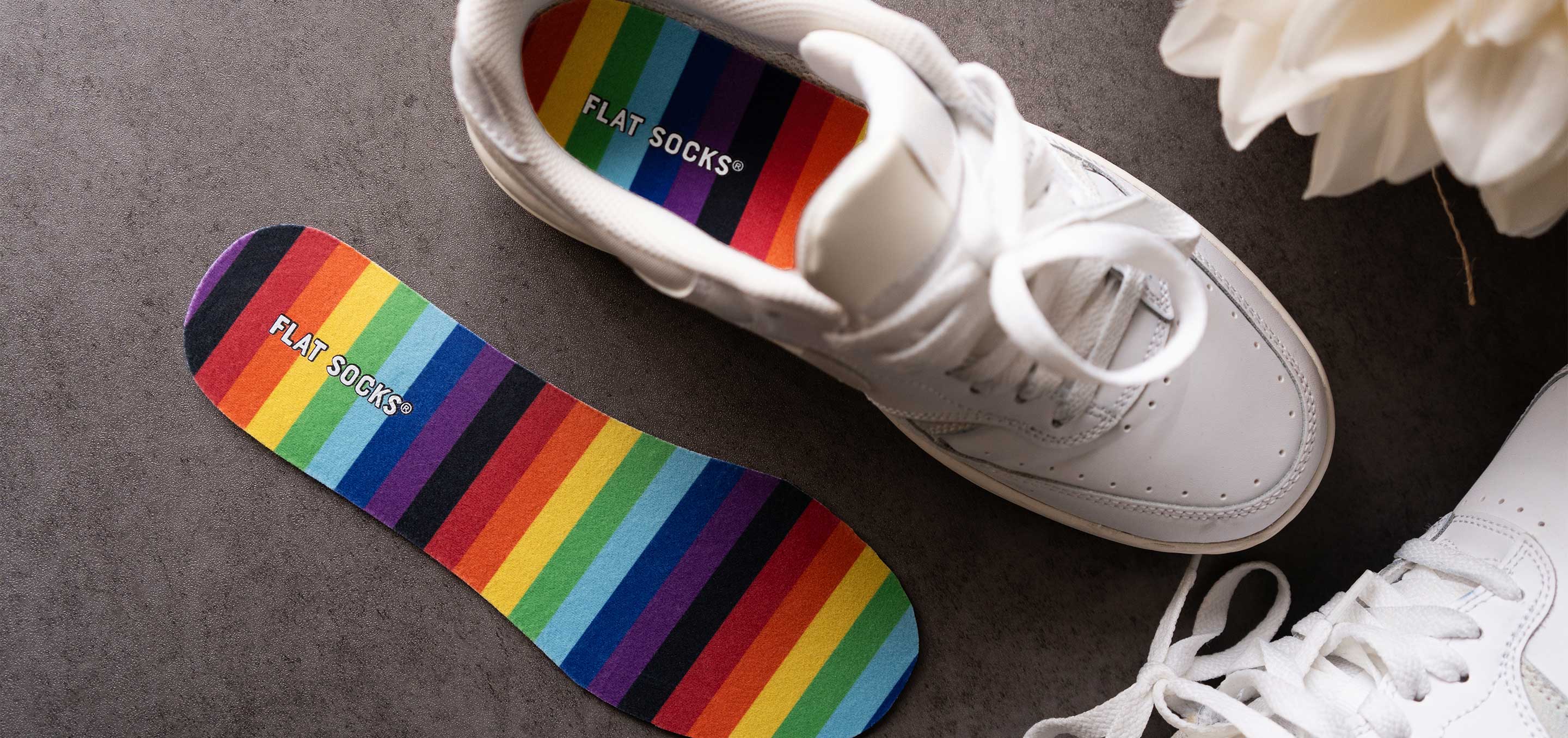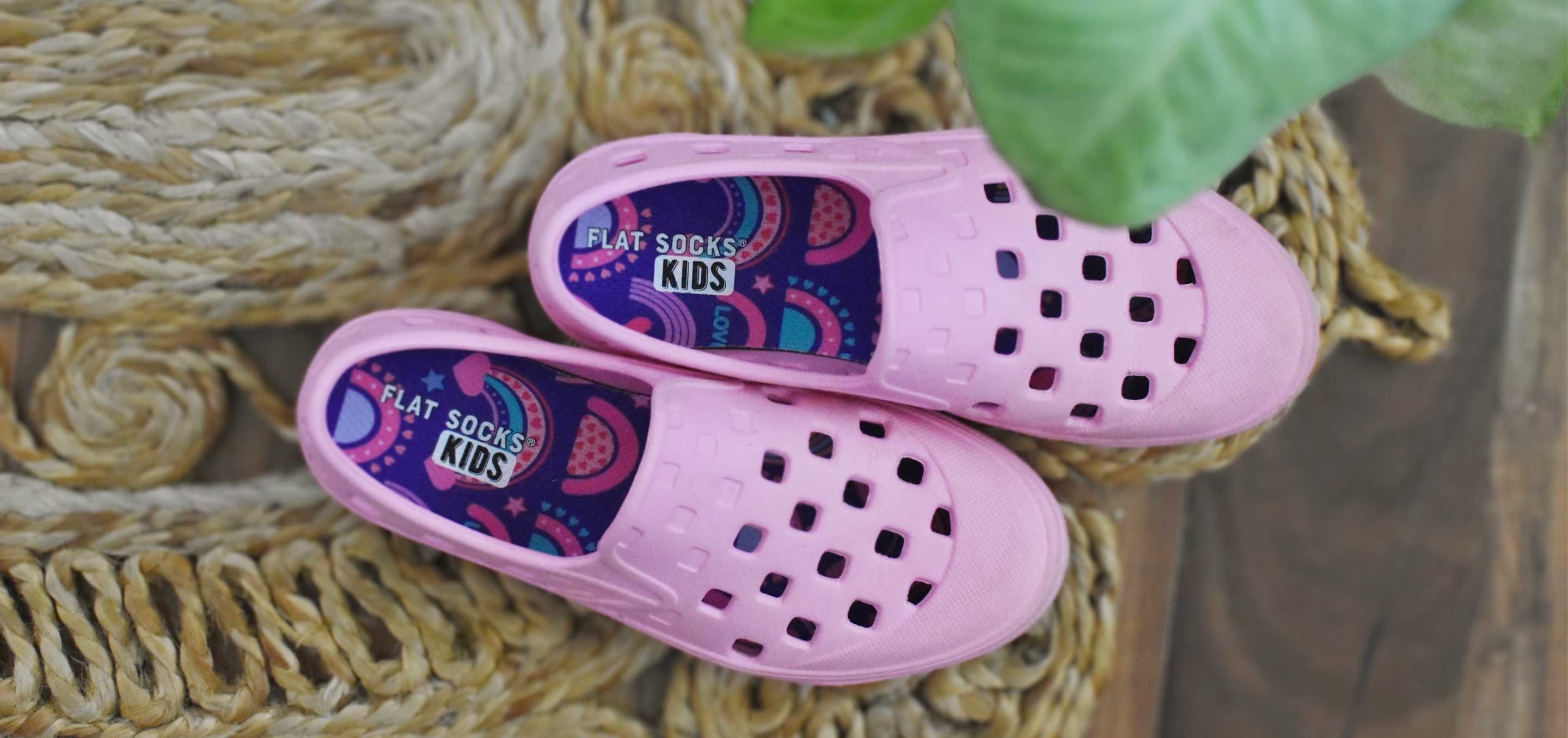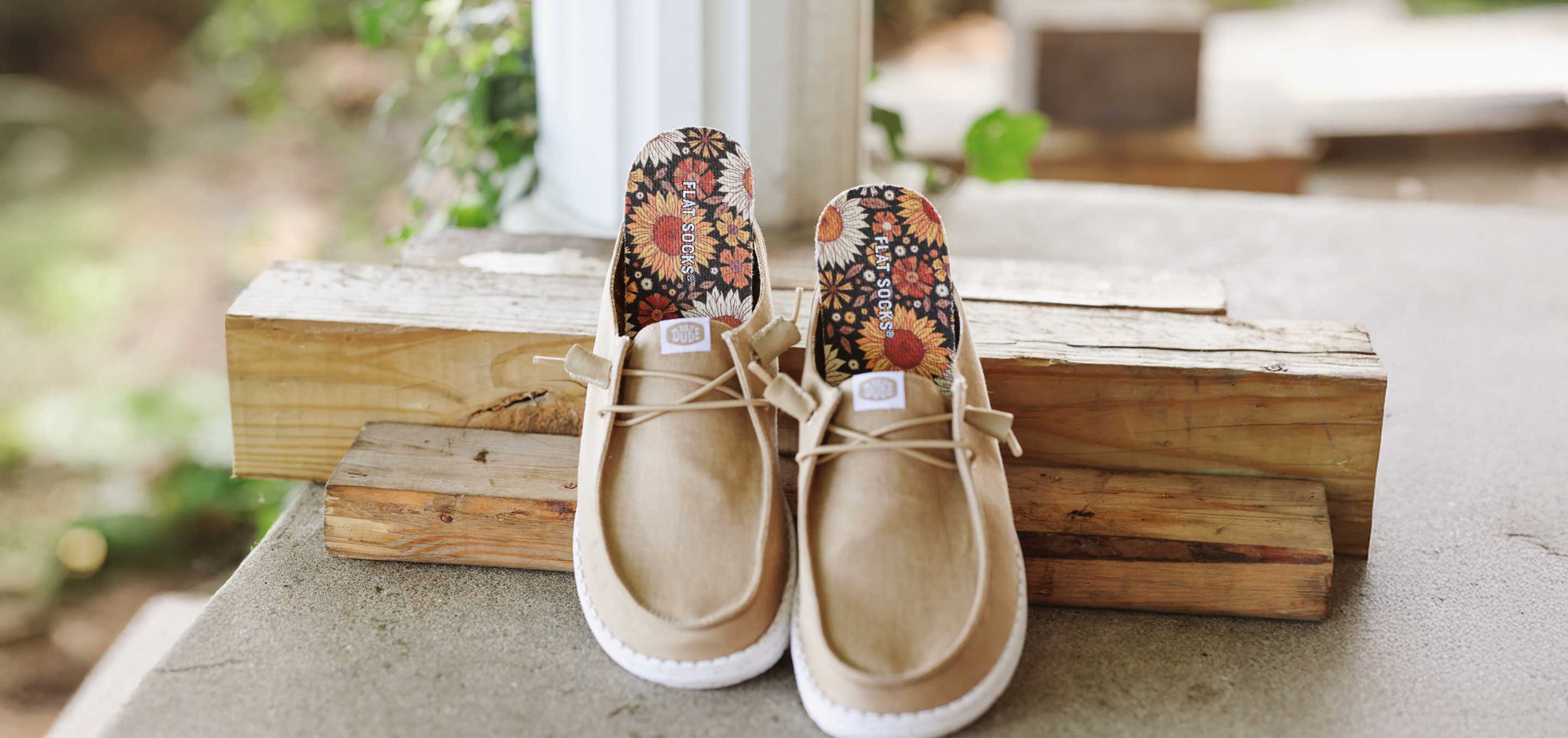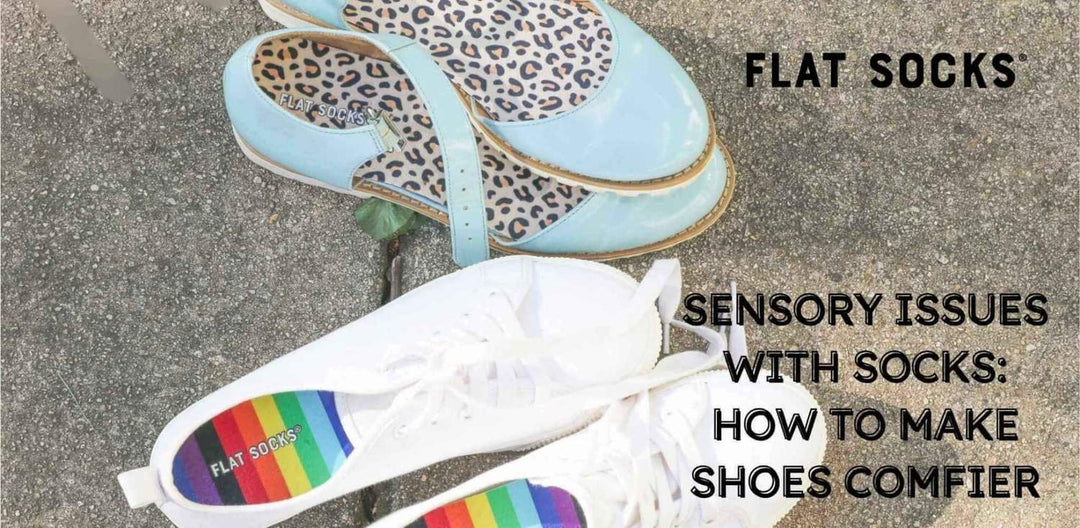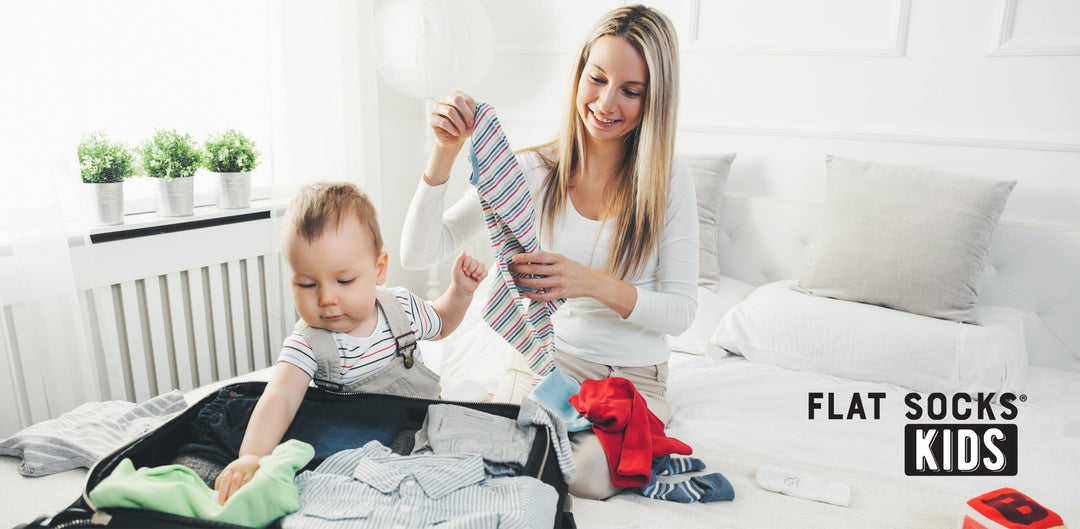Quick Guide to Dressing a Child with Sensory Issues

How do you dress a child with sensory issues?
Dealing with clothing sensory issues can be stressful for you and your child. The last thing you want to do is force your kid into something that causes them discomfort. In addition to choosing sensory clothing for kids like FLAT SOCKS® Kids sock inserts, the following tips and strategies can help take the stress out of dressing a sensory sensitive child.
Why Your Toddler Hates Getting Dressed

Does your child cry when getting dressed? Do they fidget or pull at their clothing? Ever wonder why your kid hates socks so much they go into kicking, screaming fits over wearing them?
Children with autism, ADHD, anxiety, or sensory processing disorder often experience extreme discomfort with certain clothing types. Their nervous system can’t interpret sensations accurately, triggering a sensory overload response in which your kid does everything they can to avoid that feeling. Kids with sensory sensitives might also respond negatively toward bright lights or loud noises.
Do clothing sensory issues mean autism?
Not all children who struggle with getting dressed have autism. Some are just hypersensitive to certain sensations and textures. As a parent, you can take time to try to understand why your child feels this way and learn what you can do to make them comfortable and happier.
Chances are, they're not just being stubborn or refusing to listen. They may just have sensory issues with clothing. If these responses interfere with daily activities or their ability to function at school or at home, consider speaking to their pediatrician.
What You Can Do
One of the biggest triggers for kids with sensory issues are socks. Described as “bunchy” and often inciting panic, normal socks are no fun. Your kid needs socks for sensory issues. The solution? FLAT SOCKS Kids are the no-slip, no-stink, and no-hassle socks that kids love. They won’t bunch up or slip, and your kid can be excited over all the fun patterns including rainbows, dinosaurs, outerspace, and more.

Sensory issues can be difficult to work through, but once you do, it will make getting ready for school or special events more enjoyable for the both of you. Kids who worry about their clothes all day won’t be able to focus on other things that are important for their development.
First, see if there is a pattern to the types of clothes they dislike. Do they have tags, rough seams, zippers, or buttons? Are the cuffs a little tight or do their socks bunch up? Talk to them about why they like some clothes and not others.
Second, how do they respond? You might find them tugging at their clothes a lot, having a tough time concentrating, or becoming easily agitated and refusing your help. Some kids may wear clothes that are not weather appropriate. These are normal responses to discomfort for kids with sensory issues.
Finally, look for clothing that accommodates kids with sensory issues. Sensory friendly clothing like seamless socks for kids, tagless shirts, and stretchy pants are easy to find. Some retailers specialize in them. When you go back to school clothes shopping, bring your kid and shop for kid’s clothing they like.
Tips on Dressing Kids with Sensory Sensitivities
Like most things in parenting, your sensory sensitive child won’t be comfortable with new clothes or getting dressed on their own overnight. Itchy or rough clothing causes them real physical and mental discomfort. The process should be open and collaborative, so they feel safe trying new things and exploring their emotions.
Try the following tips for dressing children with clothing sensory issues:
- Be Patient: Kids with sensory issues need their feelings validated so they feel understood and respected. Let them know it is okay to feel that way and that you are there to help. Forcing them into uncomfortable clothes will make them feel overwhelmed or hurt.
- Give Yourself More Time: With the pressure of running late to work or school, it can be harder to remain calm and give them the attention they need. Try laying a few outfits out the night before for them to choose from.
- Be Present: Especially with new clothing, sensitive kids can struggle getting dressed on their own. Be active in the process, show excitement over new clothes, and look out for any folding or bunching up while they dress.
- Warm Up: Sensory play can increase their tolerance to different sensations, and “heavy work” reduces sensitivity by warming up the muscles. Before getting dressed, engage in sensory play activities or warm up with exercises like jumping hacks, making the bed, or crab walking.
- Choose the Right Undergarments: Underwear and socks for kids with sensory issues should be seamless, breathable, and fit right so they don’t irritate sensitive areas. The feet have a lot of nerve endings, making this spot especially sensitive, so sensory socks for kids are a must.
- Offer Choices: Giving your kid a little control helps them feel empowered and enables them to express themselves. Allow them to choose from multiple outfit options or mix and match their favorites while trying something new.
- Create a Routine: Children with sensory issues work best with familiarity and routine. See if there is an order they like to put their clothes on. This makes mornings more predictable and may help improve their tolerance.
- Talk About Social Norms: Some kids will strip their clothes off the moment they get the chance even if it is in public. Explain to your child what is socially acceptable and help them understand when wearing or not wearing clothes is okay.
- Leave Out the Details: Kids just want to be comfortable and have fun. If their outfits don’t match or they’re wearing fleece leggings in summer, ignore it if it doesn’t harm their ability to function. It’s not worth the stress and both of you will feel better this way.

Do kids grow out of sensory clothing issues?
By being patient and active in how your sensory sensitive child dresses themselves, you offer them more security and empowerment. As kids get older, the help of a routine and some understanding can help them adapt to their sensitivities. Many children even grow out of sensory clothing issues.
FLAT SOCKS: Sensory Friendly Socks for Kids & Adults
If your child is sensitive to certain textures, then getting them dressed each morning can be a constant battle. Parents spoke, and we listened. FLAT SOCKS Kids are the ultimate socks for kids and toddlers with sensory issues. Our non-slip, no show kid’s socks help take the hassle out of your mornings with a machine washable and trimmable design perfect for parents and kids.
Did we mention we also have FLAT SOCKS for adults and teens? They’re the perfect sockless socks for the whole family. Have fun and forget about sock tantrums with FLAT SOCKS Kids!
References:
6 Strategies for Dressing a Sensory Sensitive Child. (2018, April 30). The Highly Sensitive Child.
7 Tips for Dressing Sensory Sensitive Children. (2021, October 25). Spectrum Disorder.
Forrester, A. (2017, June 23). 8 Tips For Dressing Sensory Sensitive Children. The Mom Kind.





